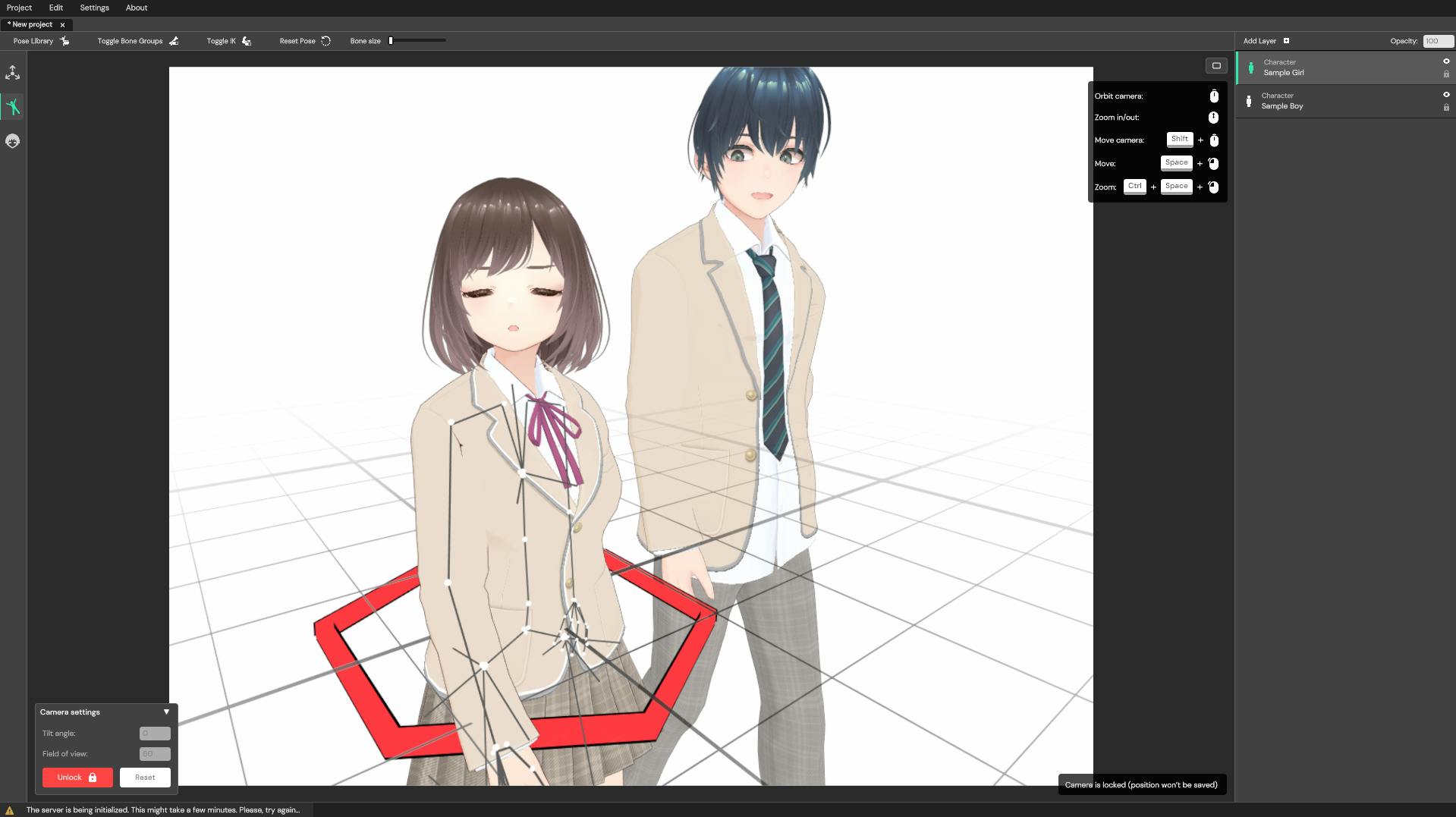How to Prompt Bonsai Studio: A Beginner’s Guide to Danbooru Tags in Stable Diffusion
Thursday, August 14, 2025

If you’re new to Bonsai Studio and want clean anime images, the fastest path to good results is learning Danbooru-style prompting. Our backend uses a custom Stable Diffusion model which is trained to “understand” Danbooru tags, so short, precise tag lists often beat long sentences.
What Danbooru-style prompting means
Danbooru is an anime image tagging site. Tags are short, lowercase words with underscores instead of spaces, like blue_hair or school_uniform.
You can use natural language, but tag-style prompts give much more consistent control because the model was trained on them.
Prompts are split into:Positive prompt: what you want to see.Negative prompt: what you want to avoid.
Core prompting rules
- Use lowercase tags separated by commas. Replace spaces with underscores.
- Order matters. Put the most important concepts first.
- Be specific but not overloaded. 10–30 well-chosen tags usually work best.
- Avoid contradictions. Don’t ask for short_hair and long_hair together.
- Start simple, iterate, and add tags only when needed.

Essential tag categories
(Pick one or two tags from each category to build a clear prompt)
Subject
Count and type
- 1girl, 1boy, solo, multiple girls, group
Age/shape (keep it general and safe)
- teen, young adult, adult
Shot type
- portrait, upper body, full body, close-up
Face and hair
Hair color
- blue hair, blonde hair, black hair, brown hair, pink hair, silver hair
Style
- long hair, short hair, twintails, ponytail, bob cut, bangs, ahoge
Eyes
- blue eyes, green eyes, heterochromia, glasses
Expression
- smile, closed mouth, open mouth, blush, determined, smug
Gaze
- looking at viewer, looking to the side, looking up, looking down
Pose and composition
Pose:
- standing, sitting, running, jumping, crossed arms, hands on hips
Framing:
- centered, from below, from above, low angle, dutch angle, profile, back view
Cropping:
- upper body, full body, bust, cowboy shot, knees up
Focus:
- depth of field, bokeh, focus on face
Clothing and accessories
Uniforms:
- school uniform, sailor collar, blazer, necktie, ribbon
Casual:
- hoodie, jacket, turtleneck, sundress, jeans
Styles:
- kimono, yukata, gothic lolita, streetwear
Details:
- hair ornament, hat, scarf, gloves, thighhighs, boots, sneakers, backpack
Background, setting, and mood
Indoors:
- classroom, cafe, bedroom, library, office
Outdoors:
- cityscape, street, park, field, beach, shrine, cherry blossoms
Weather/time:
- sunny, overcast, rain, snow, night, sunset, golden hour
Lighting:
- soft lighting, rim lighting, backlighting, volumetric lighting, dramatic lighting
Background complexity:
- simple background, detailed background
Style hints
- anime, cel shading, vibrant colors, pastel colors, high contrast, painterly
Art-like topics:
- watercolor style, sketch, monochrome (use sparingly; Animagine is already anime-focused)
Quality boosters (use lightly)
- masterpiece, best quality, high detail, high score, detailed eyes, detailed hair, intricate details
Negative prompt basics
Generic quality negatives:
- lowres, blurry, bad anatomy, bad hands, extra digits, missing fingers, extra arms, deformed, mutated
Cleanliness:
- watermark, signature, text, logo, copyright, jpeg artifacts
Composition control:
- duplicate, two heads, out of frame, cropped, bad perspective
Background control:
- busy background (if you want simple), simple background (if you want complex; put in positive instead)
If you want strictly safe-for-work, add:
- nsfw, nudity, cleavage, underboob, see-through
Emphasis and weighting
You can also control the weight of the tags by using special characters.
(Use weights sparingly. Try moving important tags earlier before increasing weights.)
Parentheses emphasize:
- (blue hair) or (blue hair:1.3)
Square brackets de-emphasize:
- [twintails] or (twintails:0.8)
You can also emphasize a group:
- ((blue hair, twintails):1.2)
A reliable prompt structure
Quality/style (optional):
- masterpiece, best quality
Subject and shot:
- 1girl, solo, upper body, looking at viewer, smile
Identity features:
- blue hair, short hair, blue eyes
Clothing:
- sailor collar, school uniform
Composition/pose:
- centered, depth of field
Background/mood:
- classroom, soft lighting
Example prompts you can copy
- 1girl, fox ears, multiple tails, standing, looking at viewer, fox shadow puppet, gentle smile, closed mouth, night, starry sky, house, stone road, depth of field, dutch angle, sensitive, masterpiece, high score, great score, absurdres
- 1boy, solo, white hair, donut hair bun, medium hair, blue eyes, empty eyes, expressionless, black gakuran, squat, head rest, blue sky, clouds, from below, masterpiece, high score, great score, absurdres
How to find the right tags
- Use Danbooru’s tag pages to discover exact names. Replace spaces with underscores.
- If a tag doesn’t work, try a simpler or more common synonym (e.g., twintails vs twin tails).
- Look at related tags on Danbooru to expand your vocabulary for hair, clothing, and poses.
Troubleshooting common issues
Extra people appear:
Add solo and 1girl, and remove group/multiple tags.
Background is too busy
Swap 'detailed background' for' simple background', and add 'busy background' to negative.
Hair or clothing color is ignored
Move that tag earlier and/or weight it: (blue hair:1.3).
The face isn’t looking at you
Add 'looking at viewer' and centered.
Results feel noisy
Remove overlapping tags and reduce quality buzzwords; fewer, stronger tags beat many weak tags.
Do’s and don’ts
- Do start minimal and iterate after each render.
- Do keep your most important ideas at the front of the prompt.
- Do use negatives to enforce cleanliness (no text, no signatures).
- Don’t pile on conflicting attributes.
- Don’t spam too many quality words; one or two are enough.
- Don’t fight the model with long prose; use clear tags instead.

Conclusion
Mastering Danbooru-style prompting is the key to unlocking the full creative power of Bonsai Studio. By using clear, specific tags and refining your prompts step by step, you’ll be able to generate high-quality, stunning images even if you’re a beginner.
Ready to put your new prompting skills into action? Download Bonsai Studio today and start creating your own! Click the link below to get started and see what you can imagine with Bonsai Studio!